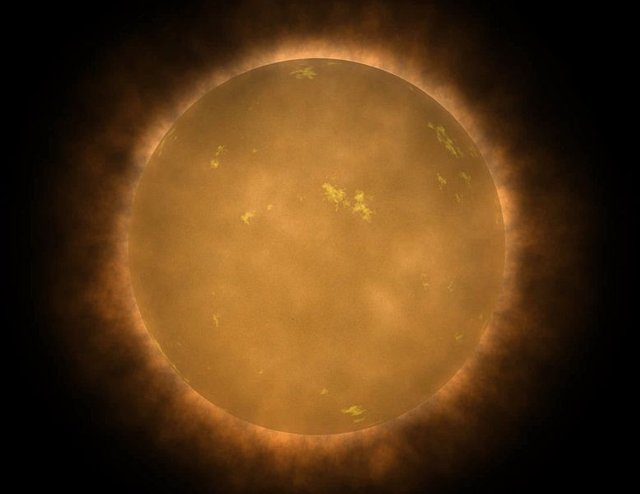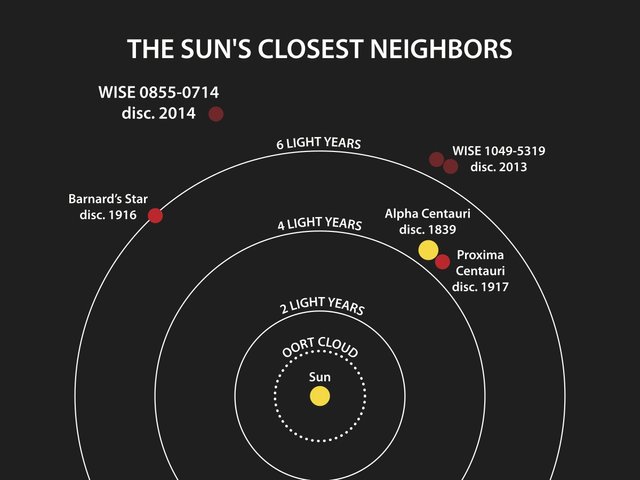Brown Dwarfs - The Failures of the Cosmos
Brown dwarfs are failed stars, that can be useful

(source)
They are common but hard to detect
They are usually about the size of Jupiter, but much more massive. Brown dwarfs also look like gas giants. They are not massive enough to start fusion, although they do give off infrared light.
Formation of Brown Dwarfs
Brown Dwarfs are formed like most other stars. I went over star formation here. Stars are formed out of massive dust clouds in space. When the cloud collapses it fractures and the dust collects into a star, or a brown dwarf. Sometimes the potential star does not collect enough mass, so the star won't be hot enough to start fusion.
Brown Dwarfs slowly Radiate away what's left of their energy
They collapse and gain a lot of heat and energy, but, since they have no energy source they slowly radiate what’s left from its collapse getting cooler and darker. This makes them hard to detect, even though they may be more common than regular stars. We can only really detect ones within about one hundred light years. After we find a brown dwarf it takes NIRSPEC (the near infrared-red spectrograph), the most powerful inferred spectrometer in the world, to analyse it’s spectrum. We can use this light spectrum to find out what gases the star is made out of. Within the spectrums of many of the stars surveyed we have found methane, something that usually only appears in gas giants and not stars. (We see methane in Jupiter, Saturn, Uranus and Neptune within our own solar system.) We also can see water on them (as steam). Real stars would easily break apart these molecules and would not be present.
Brown Dwarfs have Atmospheres like Gas Giants
Brown Dwarfs are made out of the same material as gas giants, they are just bigger. This means they have interesting features, that are like gas giants. We have analysed some and found they have auroras almost like Earth’s, just a million times more powerful and red instead of blue and green. Auroras are caused by magnetic fields. When particles are on a collision path to a planet, the magnetic ones are directed down towards the magnetic poles. They then interact with the atmosphere in large quantities and this causes the aurora. The color of the aurora depends on the content of the atmosphere and what light different atoms and compounds tend to give off. Hydrogen tends to give off red light, oxygen green and nitrogen blue. Stars tend to have a lot of hydrogen so this makes sense. Auroras cause variability in the light output, which is what first gave us the clues to them having auroras back in 2006. Stars do not have them, which means it is closer to a massive gas giant than a star.

source
(Credit: Penn State University)
Brown Dwarfs are Everywhere
We even have multiple near our solar system. The coldest we have found was only 7.2 light years outside of our solar system. We first picked it up with the telescope WISE (the Wide-field Infrared Survey Explorer). When analysing the data they saw that it moved quickly. They then used Spitzer and the Gemini South telescope to take more accurate data. They were able to discern its distance and temperature. This brown dwarf, named WISE J085510.83-071442.5, happened to be the coldest we have found to date. It goes between minus 48 and minus 13 degrees celsius. The previous record holder was about room temperature.
We have found brown dwarfs only 6.5 light years away. A pair named WISE J104915.57-531906 may even have a planet.
We Have Found Many of Them Close by
We have found more brown dwarfs near our star, 165 within 160 light years of us, during a survey of 28% of the sky. This is almost certainly not all of them. As stated above, they are not bright and we could easily be missing some. Their masses can be 13-80 times the mass of Jupiter, which can easily add up. Many people think “dark mass” could easily just be mass of normal objects we are simply missing. Brown dwarfs could be far more common than we think and make up the missing mass.This is not the most likely and we are looking for it in other ways, but keeping your options open in science is extremely important.
Brown dwarfs are important in other ways, they are usually isolated. This means that the data taken is clear and accurate. This can be rare in astronomy, normal gas giants usually have a star, stars are usually found near others. Brown dwarfs could could easily play a vital role in many new discoveries.
citation
Want to learn more science and cool facts about space? Subscribe!
Trump won
why tho
Coool....in fact some of them are VERY cool.
their atmosphere room temperature.
.
and VERY hard to detect.
suppose some are MUCH closer than 'previously thought'
so why not colonize?
Nice job man. Keep up the hard work and the good posts.
Don't tell me what to do
Flagged
no u
Join us on #steemSTEM
Very interesting post about the nature of our universe! Also the format is exemplary (citations, sources for the images, etc.) for the science category!